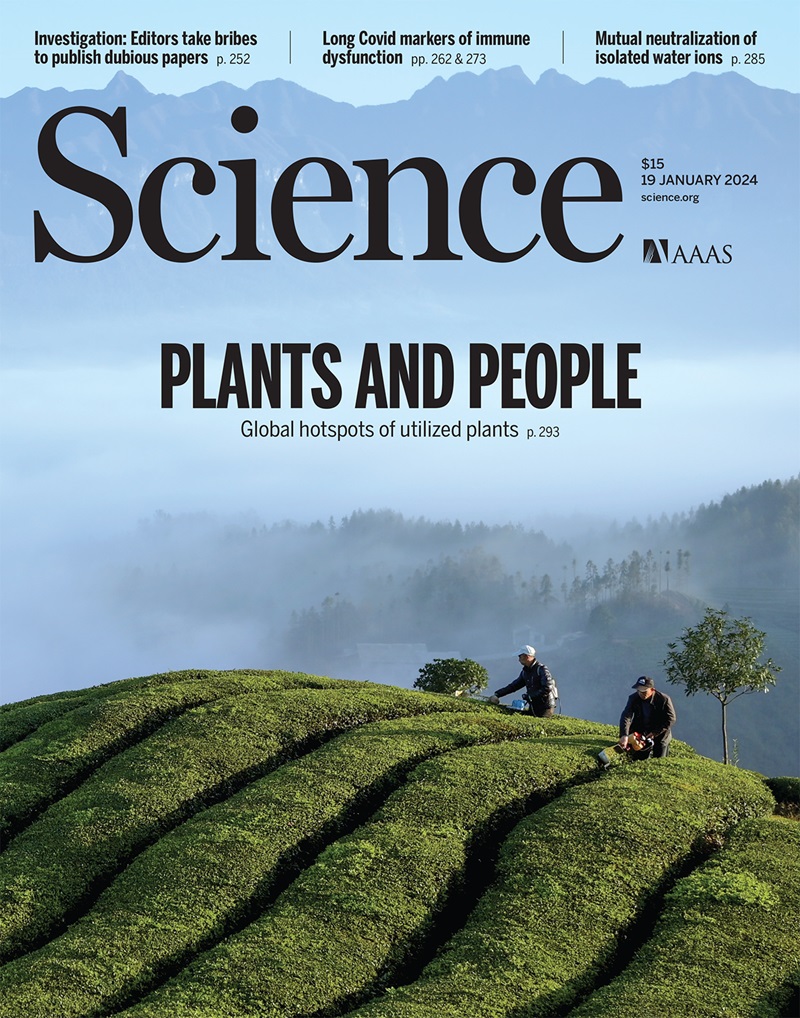肝迷走神经传入传递时钟信号,调节昼夜节律食物摄入量
IF 44.7
1区 综合性期刊
Q1 MULTIDISCIPLINARY SCIENCES
引用次数: 0
摘要
轮班工作或时差引起的昼夜节律不同步不利于新陈代谢健康,但同步或不同步信号如何在组织间传递尚不清楚。我们报告说,肝脏分子时钟功能障碍通过肝迷走神经传入神经(HVAN)向大脑发出信号,导致食物摄入模式改变,而这种改变可通过消融肝迷走神经传入神经得到纠正。肝支迷走神经切断术还能防止高脂饮食引起的食物摄入中断,并减少体重增加。我们的研究结果揭示了一种依靠肝脏和大脑之间的交流来控制昼夜节律食物摄入模式的平衡反馈信号。这确定了肝迷走神经是在昼夜节律紊乱情况下肥胖症的潜在治疗靶点。本文章由计算机程序翻译,如有差异,请以英文原文为准。
Hepatic vagal afferents convey clock-dependent signals to regulate circadian food intake
Circadian desynchrony induced by shiftwork or jet lag is detrimental to metabolic health, but how synchronous or desynchronous signals are transmitted among tissues is unknown. We report that liver molecular clock dysfunction is signaled to the brain through the hepatic vagal afferent nerve (HVAN), leading to altered food intake patterns that are corrected by ablation of the HVAN. Hepatic branch vagotomy also prevents food intake disruptions induced by high-fat diet feeding and reduces body weight gain. Our findings reveal a homeostatic feedback signal that relies on communication between the liver and the brain to control circadian food intake patterns. This identifies the hepatic vagus nerve as a potential therapeutic target for obesity in the setting of chronodisruption.
求助全文
通过发布文献求助,成功后即可免费获取论文全文。
去求助
来源期刊

Science
综合性期刊-综合性期刊
CiteScore
61.10
自引率
0.90%
发文量
0
审稿时长
2.1 months
期刊介绍:
Science is a leading outlet for scientific news, commentary, and cutting-edge research. Through its print and online incarnations, Science reaches an estimated worldwide readership of more than one million. Science’s authorship is global too, and its articles consistently rank among the world's most cited research.
Science serves as a forum for discussion of important issues related to the advancement of science by publishing material on which a consensus has been reached as well as including the presentation of minority or conflicting points of view. Accordingly, all articles published in Science—including editorials, news and comment, and book reviews—are signed and reflect the individual views of the authors and not official points of view adopted by AAAS or the institutions with which the authors are affiliated.
Science seeks to publish those papers that are most influential in their fields or across fields and that will significantly advance scientific understanding. Selected papers should present novel and broadly important data, syntheses, or concepts. They should merit recognition by the wider scientific community and general public provided by publication in Science, beyond that provided by specialty journals. Science welcomes submissions from all fields of science and from any source. The editors are committed to the prompt evaluation and publication of submitted papers while upholding high standards that support reproducibility of published research. Science is published weekly; selected papers are published online ahead of print.
 求助内容:
求助内容: 应助结果提醒方式:
应助结果提醒方式:


